We got some new plants in last week too; some really cool stuff, check it out:
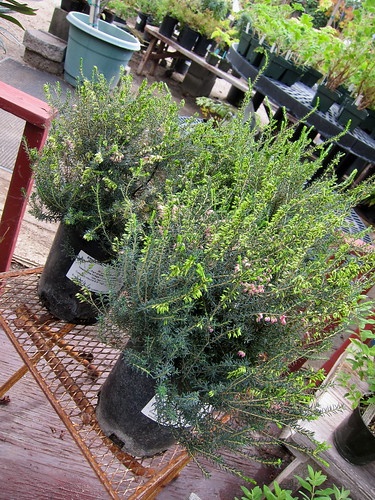
Erica carnea 'Ann Sparkes". Erica is a type of ‘heath’; Heaths have fine, short, needle-like evergreen leaves that vary from deep green to silver, gold, or chartreuse. Tiny, urn-shaped flowers sparkle like hoarfrost, in shades from white to pinks and rosy purples. Though most floriferous in winter and early spring. A beacon of dazzling color, the low-to-the-ground mat is cloaked in distinctive needle-like foliage set aglow with gilded yellow hues and bronzy red tips.
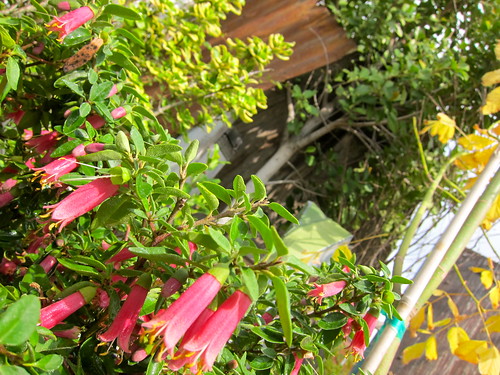
Correa - Australian native, and we LOVE our Australian plants because they are hardy, drought and wind tolerant, and always look so cool and unusual!
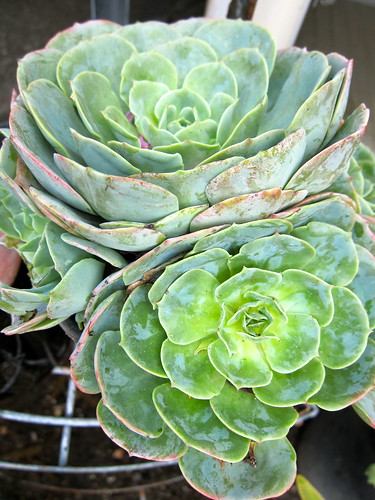
Echeveria imbricata. This popular and vigorous succulent has 4 to 8 inches wide, tight rosettes of flat grey-green leaves that, when mature, forms offsets freely to form large solid clumps 4 to 6 inches tall. It has a branched arching inflorescence bearing clusters of red and yellow flowers in the spring and early summer. Plant in full sun, even in hotter inland garden, to part sun/light shade in a well drained soil and water occasionally to very little. It is one of the hardier of the Echeveria, tolerating short duration temperatures down to 20 degrees F. GREAT color, excellent addition to any garden! Looks great in pots too - perfect way to add some interest and diversity to your garden!
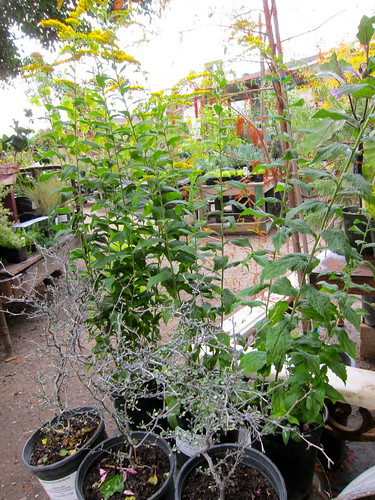
Corokia and Solidago - look at how awesome that yellow and black looks together! Corokia cotoneaster is a plant we LOVE! Has the COOLEST look to it; tiny little leaves on awesome dark dark colored branches, with tiny, bright yellow flowers in the spring! Such a great ‘accent’ plant to add interest to you garden - they look cool in pots too! Solidago rugosa "Fireworks" is another favorite. The bloom you see here is just the start! 3-4' tall, 'Fireworks' is more compact than most of the species and flowers more heavily. A lacy dome of golden flowers looks like exploding fireworks providing nectar and pollen for bees and butterflies in early fall. It’s also a great plant for the environment: seeds are used by all sorts of species of birds, plant is clump forming so it won't spread like some other species, migrating butterflies use the nectar to fuel their fall migration, and bees rely on the pollen and nectar to build up winter stores. Great cut flower too - grows best in a sunny, moist, well drained site. We only have a few of each, so get them soon!
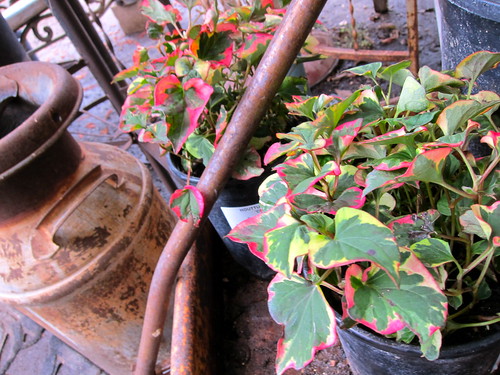
Houttuynia cordata 'Chameleon'. Look at that color! Variegated Houttuynia cordata is called the Chameleon Herb. It is a very primitive "paleoherb" upon which dinosaurs once nibbled. Multicolored red, yellow and green, heart-shaped foliage distinguishes this vigorous, rapidly spreading groundcover. Likes moisture; can be grown in standing water as aquatic. It can become invasive; consider planting in a container or a raised bed where it can be kept under control. Grows to about 8 inches to a foot high - GREAT plant o add a pop of color to a shady area!

Gunnera chilensis. So this plant, this crazy dinosaur (yes, we have now referenced 'dinosaurs' twice in this blog post, don't judge us!) looking thing, is quite possibly one of our most favorite plants EVER! We love it! It is a plant species native to southern Chile and neighbor zones in Argentina, and is known as ‘Chilean rhubarb’; you can see the resemblance in the seed cone if forms. Likes to be really moist - so great for that weird, damp area of your yard; we find it does best in shade, burns easily in the sun here, you might be okay with some sun in coastal areas. These massive, leafy plants were recently dubbed Dinosaur Food because of their prehistoric look. Although club-shaped flowers may be hidden at the base of the plant, its the awesome, huge leaves this plant is grown for! If you plant it in a spot where it can be the center of attention and give it plenty of room, Gunnera will be a real conversation piece. Do not mix with other big plants. For maximum size, feed when growth starts in the spring and then twice more during the year. This is one of the few plants that benefits from overhead watering, at least in dry, windy areas or where humidity is low.
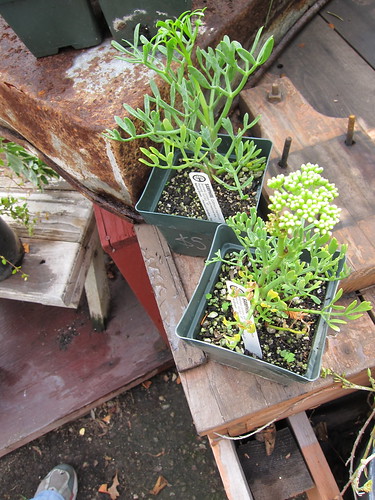
Samphire/Sea Fennel. Rare plant to find & even more difficult to research. Native to British cliffs where it has long been used as a salt substitute and an essential ingredient for pickles. Blue-green, highly dissected fleshy succulent looks really.... WEIRD! We can't wait to plant one in our own garden!
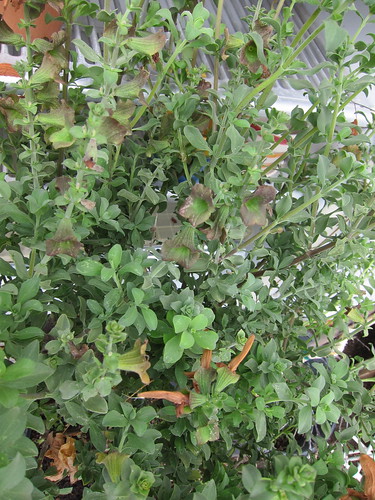
Salvia africana-lutea is an aromatic, hardy shrub with unusually colored flowers borne over a long period. It is fairly fast-growing, up to 5-6 feet, and very attractive to wildlife. Flowering begins in early spring, and the bright yellow flowers soon fade to rusty-orange and then reddish brown. After the petals fall, the saucer-like calyx, which becomes papery with age, remains as an added attraction. The flowers are both attractive and a curiosity; REALLY unusual! Salvia’s are a huge family and great addition to any garden - they attract lots of butterflies and bees, good things for your garden! Apart from attracting wildlife, brown sage makes an excellent tea for coughs, colds, bronchitis and the like (google directions!). The leaves are lovely for use in potpourri as they retain their shape, color and much of their fragrance, and mix well with other ingredients. Beautiful plant! Full sun, average to low water. We have nice big ones in five gallon containers right now at a great price!
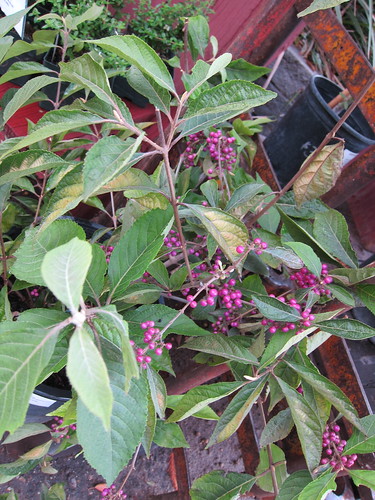
LOOK at those berries!!!! 'Profusion' Beautyberry has a largely upright twiggy appearance that can become a vase-shaped shrub in time. Small lilac or purpley-pink flowers occur July & August. These blooms are small & sometimes described as unimportant, but really they're quite pleasing, merely very close to the branches & therefore easily lost amidst the large green leaves. They form clusters of green berries by September, however, it is the tiny fruit that ripen in October that make this a stand-out among ornamental shrubs! When the deciduous leaves have fallen, the Beautyberry fruits cling to the branches in gorgeous clusters. An adaptable shrub, it tolerates wet or dry, sun or part shade, rich or depleted soil, but here in the Northwest, to maximize berry production, it is best placed in full sun with humousy acidic well-drained soil. Great for birds too!
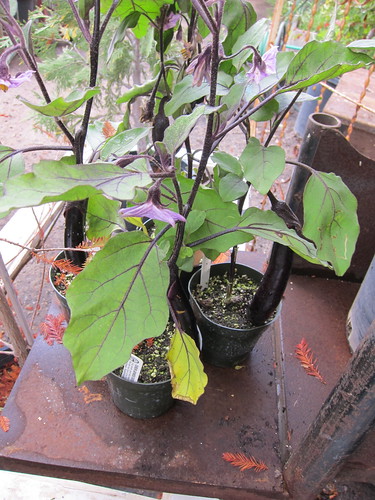
Cool season veggies! And these eggplants already got a head start for you too! Even if you don't like eggplant, totally worth growing them just for the color, and you can give away the actual veggie!
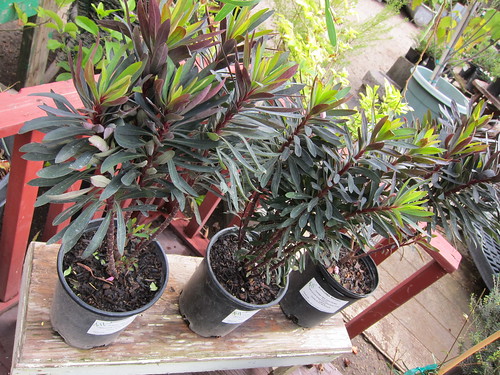
Euphorbia Blackbird. We love Euphorbias as Johnnye Merle’s; easy to grow, they add an interesting element to any type of garden, with their unique looking foliage, unusual blooms and cool colors - we are especially fond of these dark colored specimens! Full sun to part shade, likes well drained soil. Buy one, you need it!

Anemone is a genus of about 120 species of flowering plants in the buttercup family Ranunculaceae in the north and south temperate zones. Greek anemōnē means "daughter of the wind", which is a cool random thing to impress your friends with. Anemones grow best in a loamy soil, enriched with well-rotted manure, which should be dug in below the tubers. These may be planted in October, and for succession in January, the autumn-planted ones being protected by a covering of leaves or or compost. We find they do best in part shade in Southern California; they are great for a ‘woodland’ garden look, and once in the ground will spread out, taking on a very ‘naturalized’ appearance. They are one of our very favorite plants - the way they look in containers just doesn’t do them justice, wait until you get them in the ground!
So, plenty of plants to choose from - come pay a visit to Country Roads this weekend, stick your head out in the garden out back and bring home some new friends!






5 comments:
Nice web site. I look forward to visiting you next time I get up to Orange County.
Thanks! We hope to see you soon!
Are you in Argentina or Chile??? Couse Im going to a Buenos Aires apartments, in Argentina of course, and I love plants. I wanna see your collection!!!
@victoria: nope, we are in southern California, but we do love plants from Argentina and Chile!
I love how you described all of those unique plants.
Post a Comment